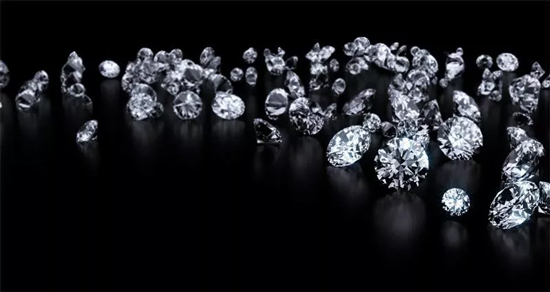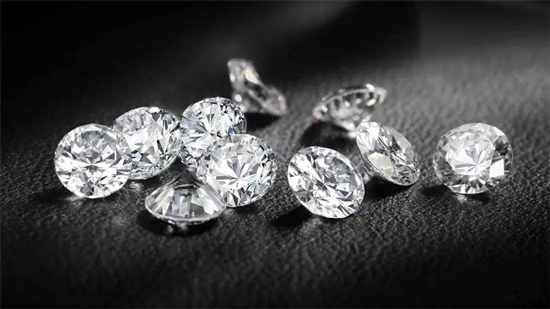The main link of diamond import Diamonds are mainly produced in Africa, Africa, Angola, Zaire, Botswana, Namibia, and Russia, Australia, Canada and other countries. China's Hunan Minjiang River Basin, Shandong Mengyin, southern Liaoning Wafangdian and other places also have industrial grade diamond or non-industrial grade diamond output, but in general, China is a country with less diamond resources, processing of gem-quality diamonds and Consumption depends mainly on imports. Introducing diamond imports, let us know the main links of diamond imports. "Diamonds are long-lasting, a permanent pass." Unconsciously, diamonds have become one of the most commonly used gems in people's lives. Over the years, people's demand for them has increased day by day. The diamond ring has been regarded by the public as a necessity for marriage proposal. In the context of the current unclear international situation, a deep understanding of the import and export taxation policies of the diamond industry, the correct understanding and proper application of relevant policies, is a nutrient for every jeweler. Diamond trade Key words of the main links of import: bonded system, general trade, processing trade. 1. Bonded system The bonded system is an internationally-accepted customs system. It refers to a kind of goods imported by domestic enterprises approved by the customs, stored, processed, assembled and temporarily suspended in various designated places under the supervision of the customs. Customs supervision business system. The bonded system includes different forms such as bonded warehouses, bonded factories, bonded areas, bonded groups, duty-free shops, and bonded re-exports. To put it simply, in areas where the bonded system is in place, merchants do not have to pay taxes after importing the relevant formalities, but as the state of the goods changes, such as domestic sales, the relevant taxes will be paid in accordance with relevant regulations. 2. Diamond trade The trade of diamonds is divided into general trade and processing trade. (1) General trade General trade refers to the unilateral import or unilateral export trade of enterprises with import and export operation rights in China. The goods imported or exported according to the general trade transaction method are general trade goods. In the import and export section, the general customs import and export supervision system is used for general trade goods. According to the specific tax reduction and exemption supervision system, the customs formalities are specific tax reduction and exemption goods, and the customs formalities are handled according to the bonded supervision system. At this time, it is bonded goods. (2) Processing trade Processing trade is a re-export business characterized by processing. After the import of diamond blanks, the relevant materials shall be provided to the Customs according to relevant regulations. All qualified processing enterprises within the special supervision area of ​​the Customs and outside the special supervision area of ​​the Customs shall complete the rough cutting, polishing and renovation of the diamonds, and the processed diamonds. Export to the international market. Shanghai Diamond Exchange's tax incentives The Shanghai Diamond Exchange (hereinafter referred to as “Diamond Exchangeâ€) is a national-level factor market approved by the State Council of the People's Republic of China on October 27, 2000. It is the only diamond import and export trading platform in mainland China. The scope of the transaction includes the sale of diamond blanks and finished diamonds, as well as other businesses that are approved by the government to allow entry. Transactions in the Diamond Exchange must be carried out between members. Non-members must engage in membership transactions when trading in the Diamond Exchange. All diamonds entering and leaving the diamond exchange must be registered or registered at the Diamond Exchange Customs. Here, the author summarizes the diamonds traded in the Diamond Exchange to enjoy specific preferential policies: 1. The Diamond Exchange is the only channel for the import and export of diamonds under the general trade of the country. All domestic rough diamonds and finished diamonds imported from the Diamond Exchange are exempt from customs duties; 2. The part of the actual value-added tax of the value-added tax of imported diamonds imported from the Drilling Exchange is more than 4%. 3. The taxation link of the diamond consumption tax is moved from the original production link and the import link to the retail link, and the consumption tax on the unset finished diamond and diamond jewelry is reduced by 5%. 4. For domestically processed rough diamonds, which are sold through the Drilling Exchange, they are exempted from VAT in the domestic sales process; if they are not sold through the Drilling Exchange, the value-added tax shall be levied at the domestic sales link at a rate of 16%; 5. The finished diamonds processed in China will enter the Drilling Exchange and will be treated as export and will not be refunded. If the self-drilling exchange re-enters the domestic market and the actual tax burden of the import link is more than 4%, it shall be refunded immediately; 6. Imported industrial drills shall be subject to import duties and import value-added tax according to regulations. The process of importing diamonds at the Diamond Exchange What is the whole process of importing diamonds at the Diamond Exchange? Let's take a brief explanation of the following: A member of the Drilling and Exchange Office imports a batch of finished loose diamonds from abroad. The consignee of the drilling contract of the unit files with the customs of the exchange, and reports the “List of Imported Goods of the People’s Republic of China†or the “List of the Outbound Goods of the People’s Republic of Chinaâ€. ", and in accordance with the provisions of the relevant documents, the customs for import and export statistics. The Shanghai Diamond Trading Joint Management Office confirms and approves the weight, quality and amount of diamonds, and issues an entry and exit approval form. After completing the above procedures, the finished loose diamonds entered the Shanghai Diamond Exchange. Suppose another jewellery company purchaser of a member of the Diamond Exchange wants to import diamonds from the jeweler. Purchasing personnel first need to apply for tax reduction and exemption to the Customs of the Diamond Exchange after the Shanghai Diamond Exchange has verified the goods. After receiving the application, the Customs will make a paper seal and hand it over to the customs at the port for handling the delivery or customs clearance procedures. After the port customs seals the goods, they are taken to the Customs office of the Diamond Exchange for inspection. After the inspection of the Customs, the Customs issued a "Special Payment Form for Customs Import Value Added Tax" and a "Return of Income for the Actual Tax Burden of Import VAT over 4%". Thereafter, the purchaser takes the payment form and the return letter to the designated bank to pay the tax. Finally, the procurement personnel handed over the tax payment certificate to the customs of the Diamond Exchange for handling the release procedures. Fleece Fabric
Fleece fabric is a soft insulating synthetic wool fabric made from PET or other synthetic fibers. One of the first forms was Polar Fleece created in 1979 by Malden Mills, a new, light and strong pile fabric meant to mimic and in some ways surpass wool. Fleece has some of wool`s finest qualities but weighs a fraction of the lightest available woolens.
Fleece fabric , as it is light, warm, plushy, soft touch, easy to wash, and most of all, cheap, is very popular in our household productions. Polester fleece has a lot of various styles due to the different weaving, technology, artwork, finish processing... it can be vaious and unique as per customers requests. Fleece blankets are most preferable due to its multi-purpose usage for bedding, snap, sofa, travel and babies use, pets use. We manufacture popular fleece fabric including Coral Fleece Blanket, Flannel Fleece Blanket, Polar Fleece Blanket, velveteen Fleece Blanket, and other home textiles etc- According to the seasons and weather, the size and the weight of our blankets differ accordingly. Customers' OEM designs and patterns are strictly protected, with us, your products are of good quality and under guaranteed.
Polar Fleece,Fleece Fabric,Polyester Polar Fleece Fabric,Cotton Fleece Fabric SHAOXING BOLIHAO HOME TEXTILES CO.,LTD , https://www.bolihao.com
